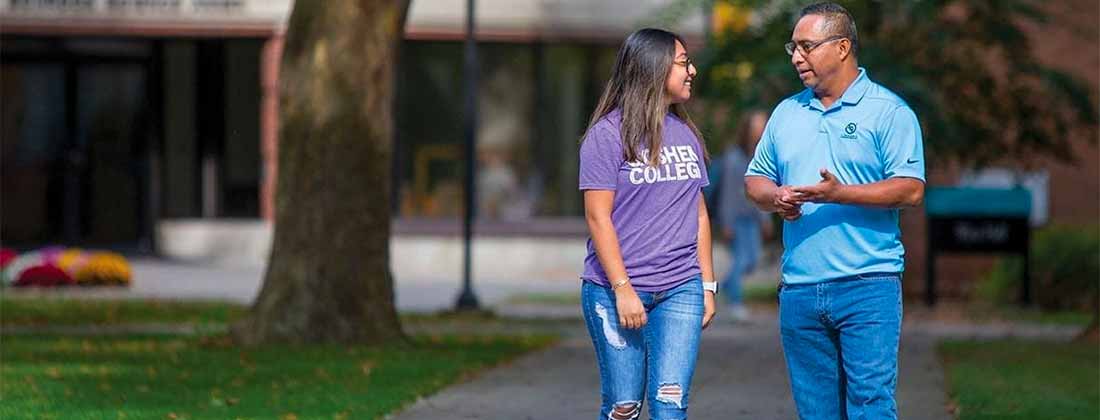Episode 10
College today: More students are older, working, supporting others
June 3, 2019We talk about college affordability a lot these days, but the challenges for some students go beyond just money: Forty percent work full time and one fourth have children or other dependents.
Age alone is important: More than a third of college students are 25 or older, and helping these students who live complicated lives requires a different kind of college experience, one that supports more than academic and financial needs.
On the 10th installment of the Lumina Foundation podcast “Today’s Students/Tomorrow’s Talent,” I talk to representatives from two organizations that provide needed resources to support today’s college students.
Nadine Browne is the director of Accelerated Study in Associate Programs (ASAP) at Bronx Community College. ASAP is offered at seven community colleges in the CUNY (City University of New York) system and three comprehensive schools, connecting students with the support services they need.
Those in the program get a personal advisor who helps them overcome obstacles on the way to graduation and a career. Typical obstacles include tuition, naturally, but also counseling needs and even MetroCards to use public transit.
“It has to be all-in, in terms of supporting our students,” Browne told me, “because they have a vast number of obstacles that they face—often suddenly that appear out of nowhere—and we have to be readily available to step in and connect them with interventions and provide that direct service.”
ASAP started in 2007 and has doubled the graduation rate to more than 50 percent—twice the national average for community colleges. In 2015, New York Mayor Bill de Blasio expanded the funding for ASAP, which now serves 25,000 students, up from 13,000. Ultimately, the goal is to serve at least half the students in the 24-campus, 274,000-student system.
Browne says that while ASAP is proving to be effective, it doesn’t necessarily need to be replicated. Schools should look at what options they currently offer to address student needs and build upon those successes. If they find that there’s a void or deficit in certain areas, schools should figure out the best way to fill them including building partnerships with off-campus organizations.
In Chicago, meanwhile, the organization One Million Degrees is doing something similar to ASAP. Founded in 2006, OMD works with community college students, trying to give them financial, personal, academic and career support—and ultimately, economic mobility.
CEO Paige Ponder and Chief Program Officer Veronica Herrero said One Million Degrees partners with 10 colleges and serves over 800 students. Program coordinators work with students as needed, directing them to campus services that can make their college life easier.
Ponder and Herrero said students often sign up for OMD’s financial help but stay for the feeling of community.
“If you provide students the support that they need and build that community, then we could see dramatically higher graduation rates,” Ponder said.
One Million Degrees also reaches out to high school students, who are 70 percent more likely to attend college if offered the program.
“It’s helping them see their path more clearly,” Herrero said.
Both programs know that when it comes to supporting students, we can’t focus on just one thing – we have to look at the big picture, and how education fits into their complicated lives.

